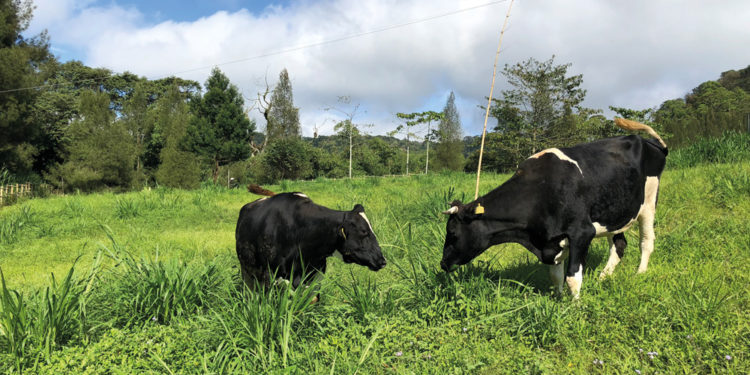Dairy takes center stage in French and British cuisine, but the product – and use – can be surprisingly varied. Adding butter to toast, adding cream to a sauce, or constructing the perfect cheese platter – where your dairy comes from can make a surprising difference.
This article explores the distinctions between French and British dairy, focusing on flavour, texture, and culinary use. We’ll also take a closer look at President products as an example of French excellence in the world of dairy.
French Dairy Tradition
France is renowned for its milk. From creamy butters to more than 400 distinct types of cheese, the country has built a reputation on local specialties and craft methods. AOP (Appellation d’Origine Protégée) labels safeguard numerous of these items, ensuring that products like Camembert or Roquefort are made in specific regions with traditional methods.
French milk does not merely encompass quality – it encompasses culture. Cheese, in particular, usually has its own agenda on the plate, preceded by bread and wine. Butter is not simply considered an ingredient, but an indulgence commodity in and of itself. Creams, even, are designed with a function, for sautéing or for finalizing sauces, rather than as a simple way to top cakes.
Like Président, they epitomize that attention to detail. As one of France’s best-known dairy brands, Président produces high-quality butter, Brie, Camembert, and crème fraîche. The brand’s products are staples in most French fridges and now begin to appear more regularly in UK supermarkets.
British Dairy at a Glance
Though French dairy culture is rich in tradition and regional variety, British dairy has a unique profile. Known for cheddar cheese, clotted cream, and rich butters, the UK also enjoys excellent milk from grass-fed cattle, especially among rural communities like Somerset, Devon, and Yorkshire.
British cheese is more crumbly and harder, and British butter tends to be more salted and slightly firmer in texture than French. British double cream and clotted cream are notoriously thick and rich – perfect for sweet dishes like scones, trifles, and strawberries and cream.
There has been a boom in organic and artisan dairies in the UK in recent years, with many equaling their European counterparts in terms of quality. They focus on sustainability, animal welfare, and traditional methods, creating more interesting and diverse dairy products across Britain.
Key Differences in Flavour and Texture
Here’s the comparison between French and British dairy in key areas:
Butter
- French Butter: Typically lightly salted or unsalted, with higher fat content (82% and higher) and a cultured, tangy flavor. Use Président butter as an example – ideal for baking or spreading over freshly baked baguettes.
- British Butter: Typically creamier, saltier in flavor, and a firmer texture. It’s the usual default option for spreading onto toast or melting over mashed spuds.
Cheese
- French Cheese: A wide variety, including the soft-ripened Brie and pungent strong blue Roquefort, and creamy goat’s cheeses. They typically have strong textures and textured rinds.
- British Cheese: Most known for cheddar, Red Leicester, Wensleydale, and Stilton. The British cheese is harder, longer-aged, crumbly and rich full-bodied in flavours.
Cream
- French Creams: Crema fraîche and lush cooking cream varieties are used in French sauces and soups. Slightly acid, they’re heat-stable.
- British Creams: Clotted cream and double cream are luxurious, silky, and well-suited for desserts. Golden-crusted clotted cream makes a centerpiece of afternoon teas.
- Cooking Applications
- The differences between British and French dairy don’t stop at taste – they determine the use of these foods in the kitchen.
- When to Use French Dairy:
- Butter: Save for pastry, puff pastry, or sauce finishing like beurre blanc.
- Cheese: Utilize Président Brie or Camembert in baked items, melt on vegetables, or include in a gourmet cheese plate.
- Cream: Add crème fraîche to soups or quiches for an indulgent, tangy finish.
When to Use British Dairy:
- Butter: Ideal for toast, baking, or shortcrust pastry.
- Cheese: Use cheddar or Stilton in pies, gratin, or mac and cheese.
- Cream: Pour over puddings, drizzle over fruit, or spoon over hot puddings.
It will help you choose the most appropriate for the dish that you are making if you have an idea of the flavour characteristics and cooking natures of each dairy type.
Taste Test at Home
Curious to see how they stack up? A taste test can be a refreshing and eye-opening exercise. Do the following:
- Put French and British butter side by side on white bread or toast. Notice the creaminess, saltiness, and aftertaste difference.
- Taste slices of Président Brie alongside mature British cheddar. Observe their textures and flavour intensity.
- Create a plain pasta sauce – a crème fraîche-based one and another with double cream. Observe how each is affected by heat and how the flavor is transformed.
Such experiential parallelism is not only educative but also an entertaining method for engaging your sense of taste and broadening gastronomic experience.
More Than Just Taste: Culture and Identity
Dairy communicates more than taste – it communicates a way of life. In France, dairy is central to formal dining, gastronomic pride, and artisan tradition. In Britain, dairy is part of cozy, homemade traditions and comforting everyday rituals.
French dairy carries refinement and luxury, while British dairy is about warmth and satiety. Both are not superior – they simply relate different food stories.
Increasingly, trendy kitchens everywhere are mixing the two: French butter on an English Victoria sponge, or British cheddar on a French onion soup.
Conclusion
The French and British dairies each bring their own special offerings. French choices like those of Président bring sophisticated depth, variety, and beauty to your table. British staples bring dependable quality and comforting flavors deep in the culture.
Rather than choosing one and not the other, enjoy the difference. Use French butter to enrich your croissants and sauces, but British cheddar to enrich your casseroles and sandwiches. Mix and match as the occasion and dish warrant.
Understanding these differences not only makes you a wiser consumer – it makes you a more thoughtful cook. And the next time you’re strolling through the dairy aisle, you’ll know exactly which butter, cheese, or cream to pick up.











































































